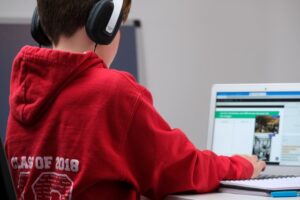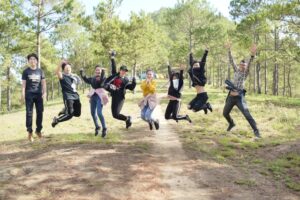“Guiding Special Education Students to Stay on Track for Success in Hybrid Classrooms”
Category: Restorative Practice & Absenteeism
Jan 25
Relational scavenger hunt – online version from restorativeteachingtools.com
“OBJECTIVE: Participants will build relationships, get to know each other, and laugh together over Zoom!”
Jan 16
A daily class ritual of dedicating the day’s learning builds community and trust and helps teachers get to know their students
“For those of us teaching remotely, the daily dedication can still help infuse the online space with genuine humanity. You can even make a collage out of the students’ dedicatees to use as digital wallpaper for virtual class meetings or your course homepage.”
Oct 21
Teachers can build strong relationships with and between students to help them get through this very challenging time.
“educators need to be attuned to indicators that a student is struggling. They also need to embrace new strategies to support the social and emotional well-being of students during distance learning. “
Oct 05
5 Research-Backed Tips to Improve Your Online Teaching Presence – Edutopia
“In all forms of distance teaching, the ability to humanize the relationship with distant learners is important,”
Oct 05
The Urgent Need to Avoid Punitive Responses to Poor Attendance, attendanceworks.org
“What improves attendance is partnering with students and families to identify and address the root causes that lead to students to miss school in the first place, whether absences are connected to barriers to showing up for school, negative experiences in school or a lack of engagement. Root causes can also be related to misconceptions about attendance, such as thinking that sporadic absences aren’t a problem, or missing two days a month doesn’t affect learning.”
Sep 14
Conversation groups allow students to explore vulnerability about their experiences and build trust in one another.
“This school year, many educators face the challenge of building relationships with new students virtually. How can they foster a sense of community without the camaraderie and spontaneity of in-person, classroom interactions? One approach is to make more time for personally meaningful, nonacademic, youth-driven conversations. In my teaching practice, this has taken the form of This …











